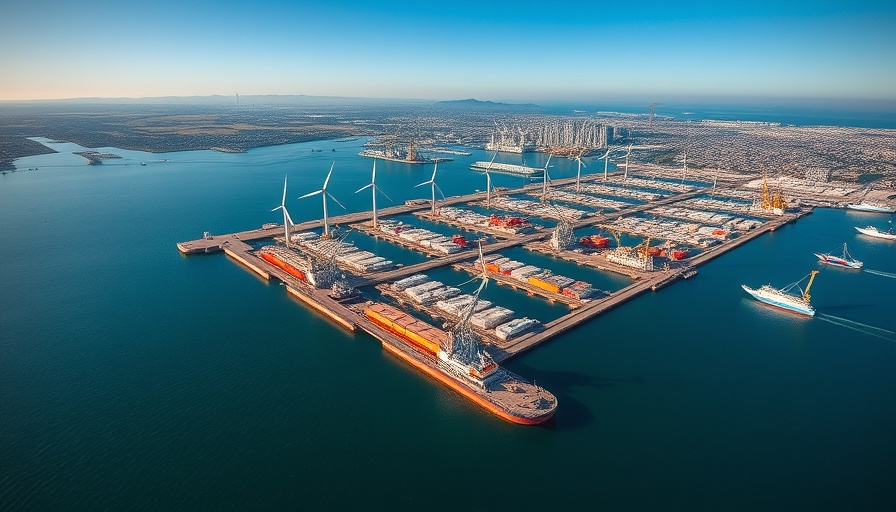
California's Bold Move: Investing in Offshore Wind Energy Infrastructure
California is making a significant play to position itself as a leader in the offshore wind energy market, committing over $225 million to enhance port infrastructure critical for floating offshore wind projects. With climate change accelerating, this move aims to bolster the state’s economic future and clean energy goals.
Funding Initiatives Driving Change
The financial boost comes from Proposition 4, approved in the recent budget bill, which emphasizes long-term commitment to renewable energy projects. This substantial funding is part of a broader vision, following the approval of a $10 billion Climate Bond by voters in late 2024, which allocated $475 million specifically for offshore wind developments at California ports.
A New Dawn for Offshore Wind Development
California's emphasis on offshore wind is robust. By mid-2030s, the state plans to deploy commercial floating offshore wind systems to harness the winds that blow stronger and more consistently offshore than on land. Reports suggest potential offshore wind resources could contribute an estimated 25 GW of capacity by 2045. This strategy not only diversifies California’s energy portfolio but also reduces its reliance on fossil fuels, aligning with global sustainability targets.
Port Infrastructure: The Backbone of Renewable Energy
The upgrade of port facilities is deemed essential for the success of offshore wind initiatives. Major ports, including the Port of Long Beach, are being transformed to accommodate floating wind technology, making them capable of supporting next-generation renewable energy vessels and operations. This transformation creates jobs and stimulates local economies, providing a future-proof maritime infrastructure.
Community Support and Local Impacts
Public sentiment appears to be largely supportive of these investments, with polls indicating that approximately 75% of California adults back offshore wind initiatives. Community-led endeavors are crucial as they play a vital role in ensuring that the projects meet local needs and environmental standards, fostering a sense of ownership among residents and stakeholders alike.
Facing Challenges, Seizing Opportunities
Despite significant federal cuts affecting offshore wind developments nationally, California remains resolute. Industry leaders believe state initiatives are paving the way for a flourishing offshore wind sector. By investing in this burgeoning sector, California exemplifies how state-level ambition can counteract national regressions in renewable energy policy.
Why This Matters for Commercial Construction
For professionals in commercial construction, these developments represent a promising landscape for future projects. Partnering with entities involved in this transition can lead to enhanced project efficiencies, innovative construction methods, and ultimately, sustainable outcomes. As the industry pivots towards greener alternatives, early engagement in offshore wind infrastructure projects can set precedents for successful collaborations.
By understanding and adapting to these changes, construction stakeholders will not only contribute to the greater good but also position themselves strategically within a flourishing market.
To stay ahead in the rapidly evolving construction landscape, engaging with and investing in offshore wind projects could open new avenues for business growth and sustainability. Dive into the emerging opportunities by connecting with local industry leaders and participating in discussions around offshore infrastructure investments.
 Add Row
Add Row  Add
Add 




Write A Comment